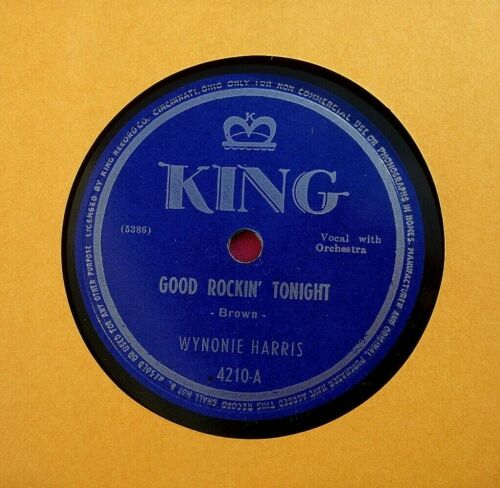
We turn now to two very important records in the late ‘40s-early ‘50s gestation period leading to the birth of Rock & Roll Music in the mid-‘50s.
Chicken Shack Boogie was written and recorded by Amos Milburn, R&B/Jump Blues singer, self-taught piano player, and songwriter. Milburn was born in Houston, Texas on April 1, 1927. He died there 52 years later. He was a combat veteran of World War Two. After the war he settled for many years in Los Angeles. In 1947 he composed and recorded this tune in Los Angeles for Aladdin Records. The recording session took place on November 19, 1947. The record was released in 1948. The saxophone player was Maxwell Davis. Milburn handled the piano and vocal duties. The string bass player and drummer were unidentified. The electric guitar was played by Frank Haywood. It was buried deep in the mix and is very hard to hear.
Good Rockin’ Tonight was composed and recorded, first by R&B singer and piano player Roy Brown in 1948, then covered by established Jump Blues singer Wynonie Harris in 1948. Brown was largely unknown in 1948. This song was his first record. Harris’ recorded version is a clearly superior performance by a seasoned professional. There are two saxophones, player by Hal “Cornbread” Singer and Tom Archia. The piano player, drummer, electric guitarist and string bass player were not identified in the recording documents. We can hear that the boogie rhythm line is doubled and played in unison by the piano player and the bass player, giving the record a strong bottom end driving rhythm. Again, the electric guitar is very hard if not impossible to hear.
These two records were made by Jump Blues and R&B musicians, but neither of them are blues. They are something else which was developing in the late ‘40s and early ‘50s into what we know as Rock & Roll Music. These early influences let us know that there was actually no one recording that we can say was “the first Rock & Roll record”. The creative contributions came from both the black and the white musicians who drew on the Jazz, Blues, Gospel, Folk, Pop, Country, Western Swing, Boogie Woogie and Ragtime that they grew up listening to on the radio and in the juke boxes, and that made them play and sing the way we hear them in these early records.

From this point forward, vocals, electric guitars, and electronic effects such as echo, reverb and overdriven amplifiers are going to gradually become more prominent in the records we hear. We still have several more early influences before we get to “D-Day” (July 5, 1954)
Rock on!
Mike
